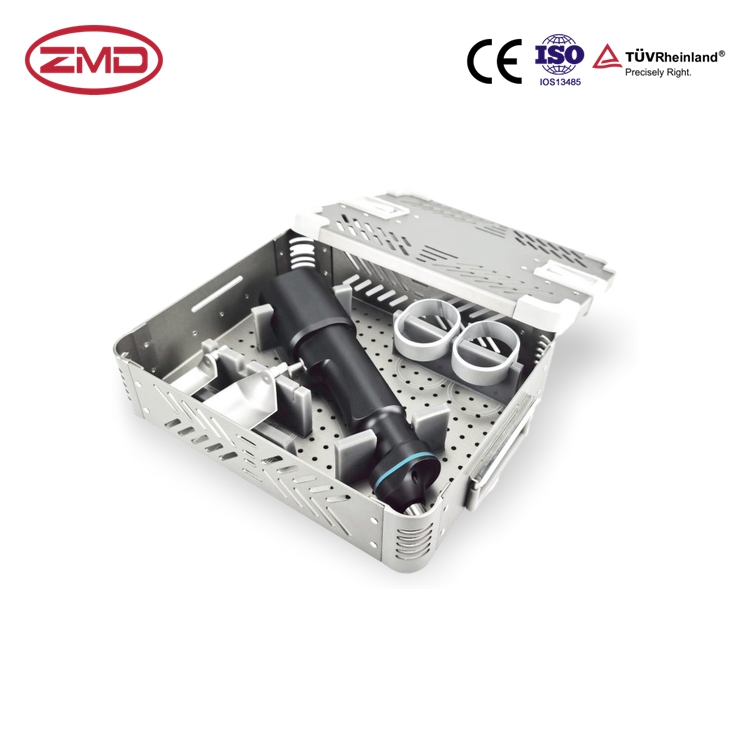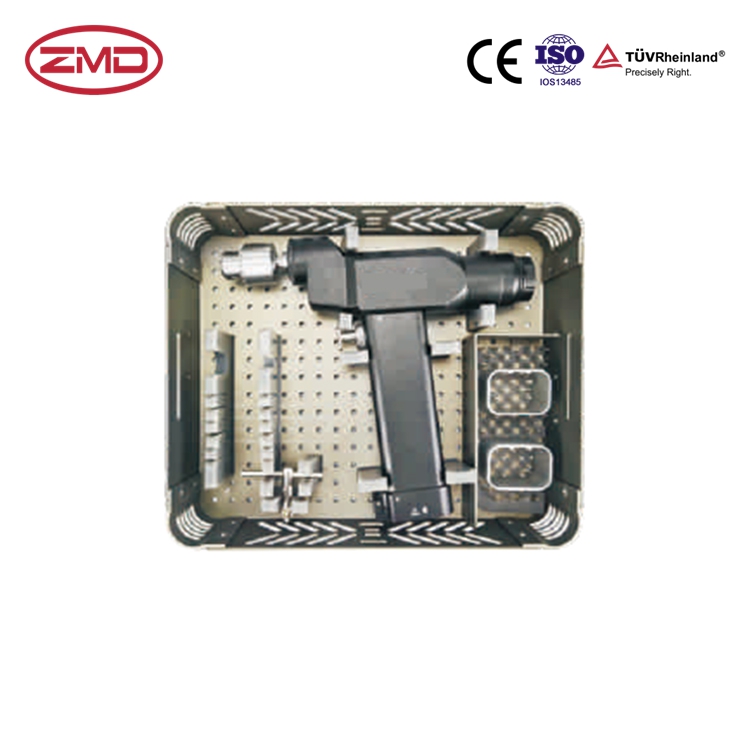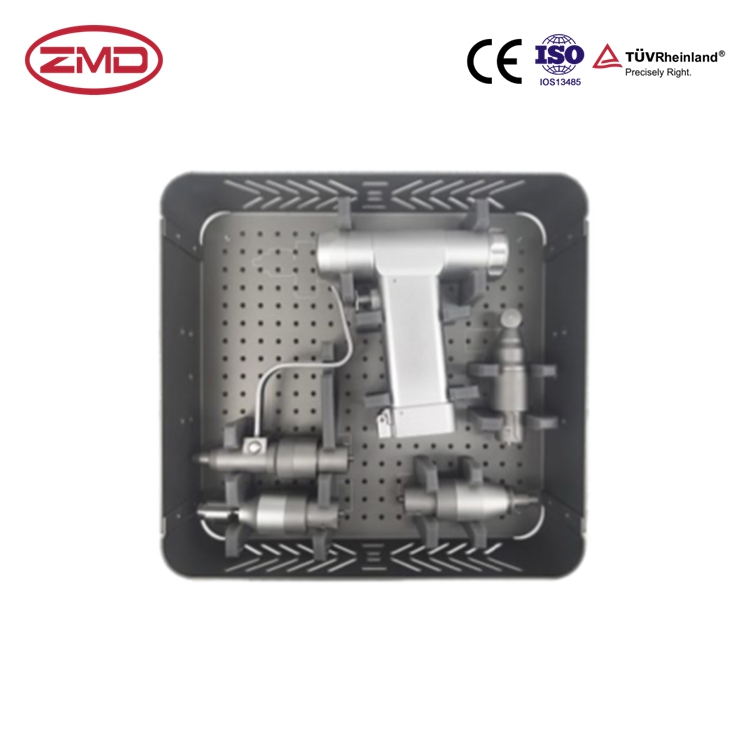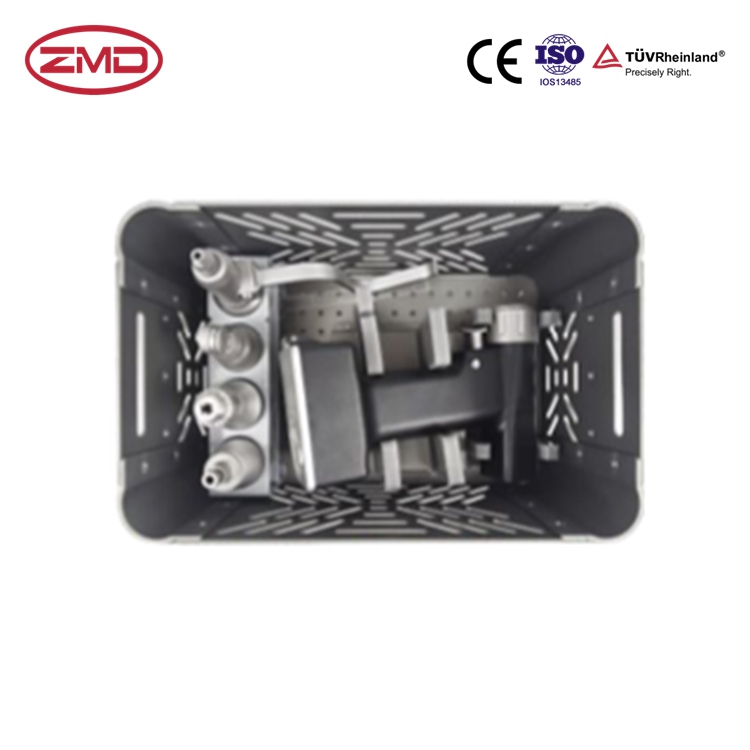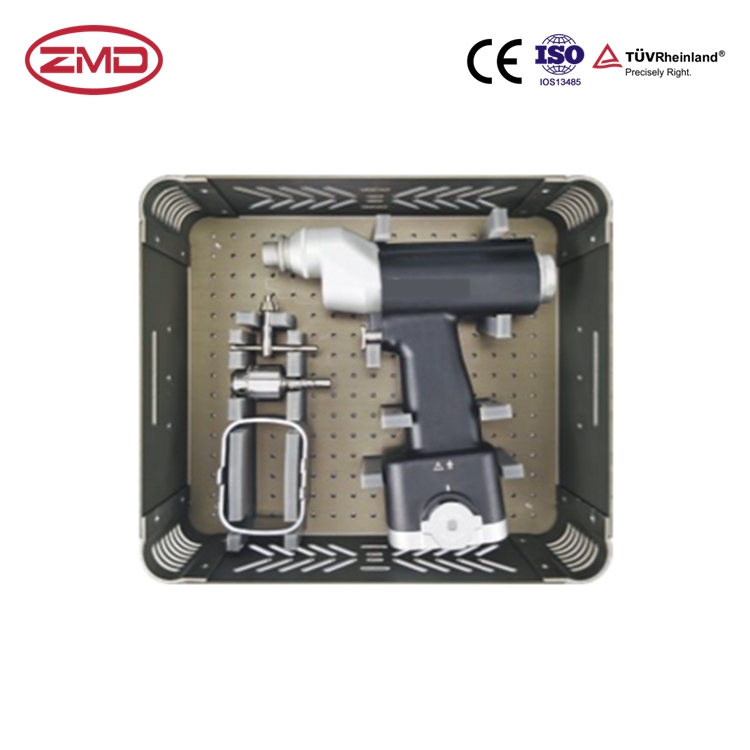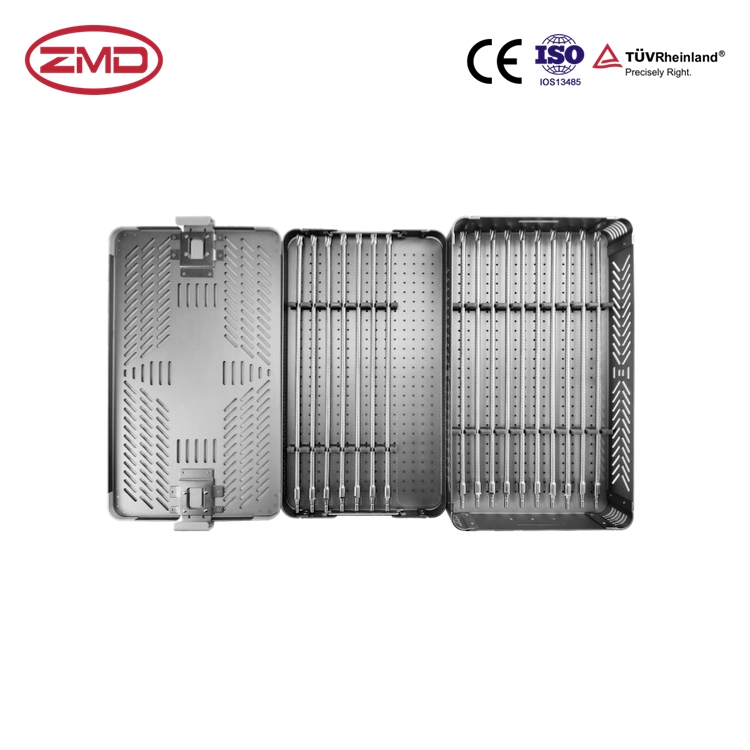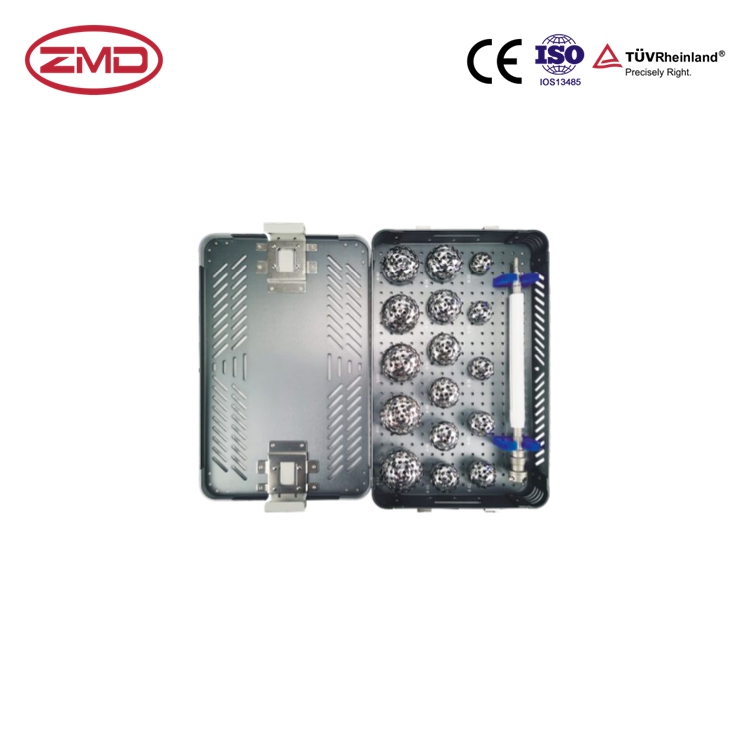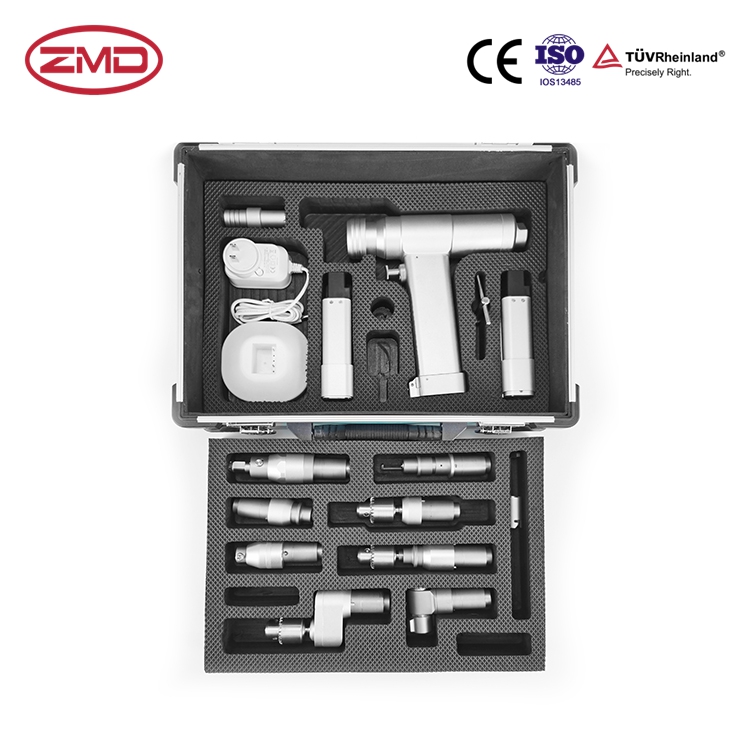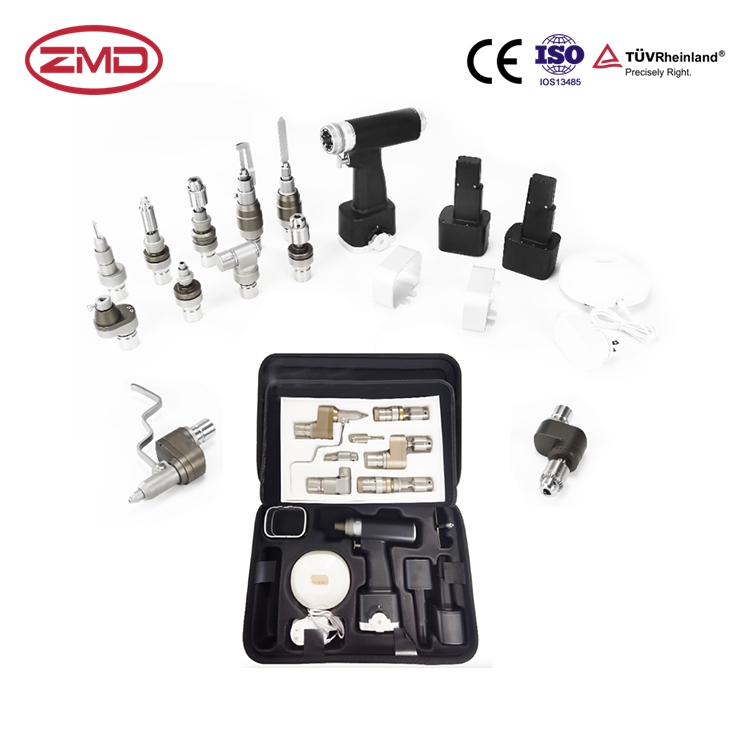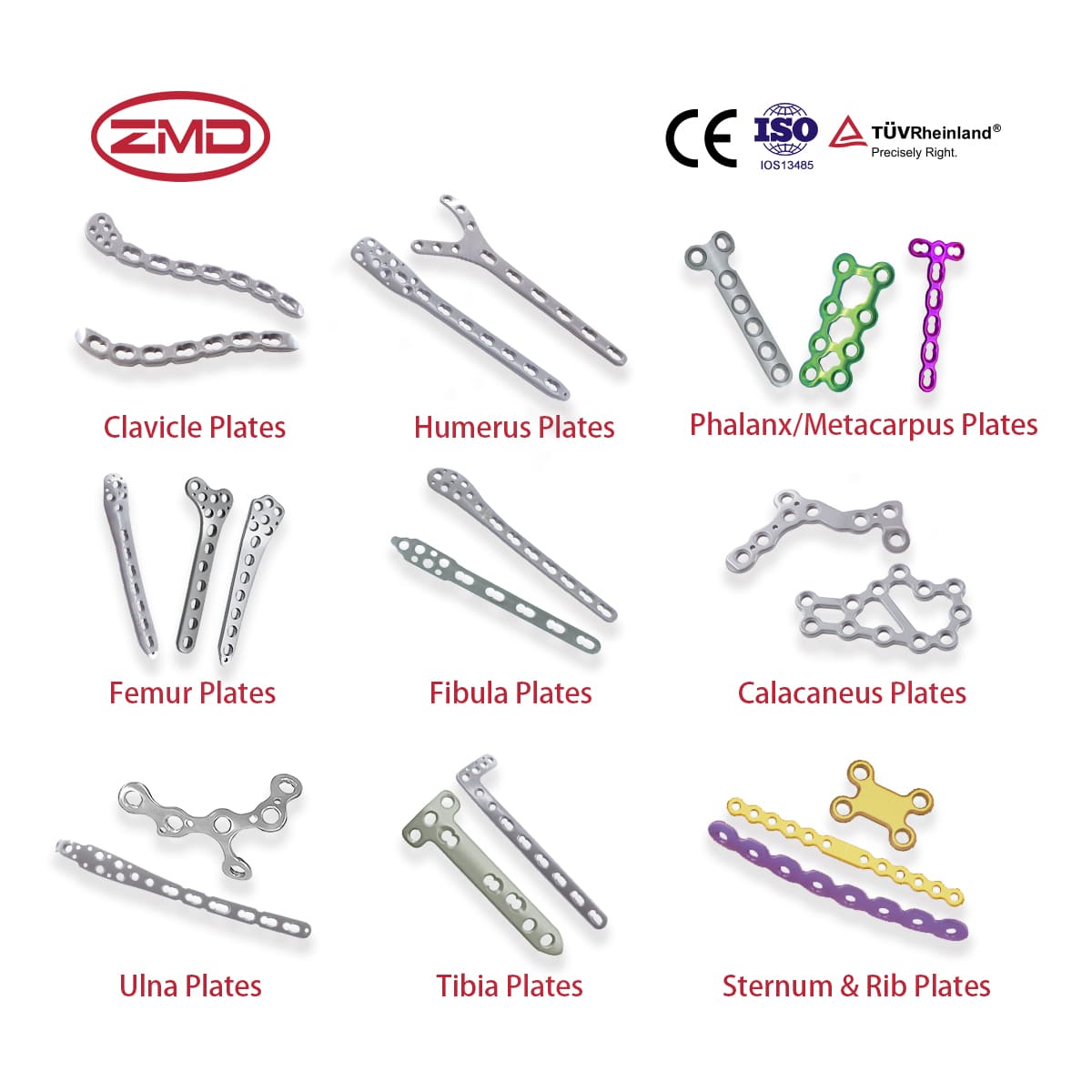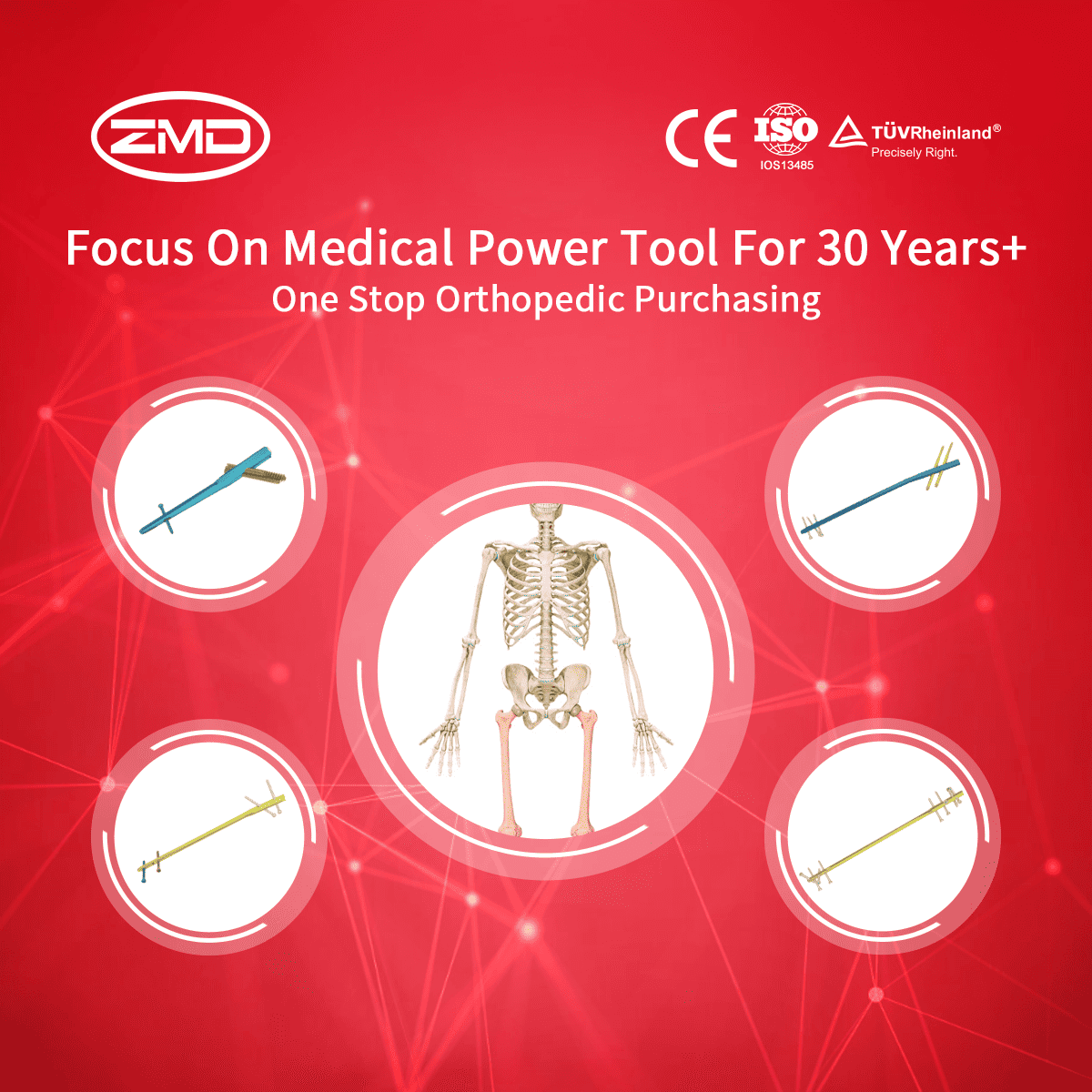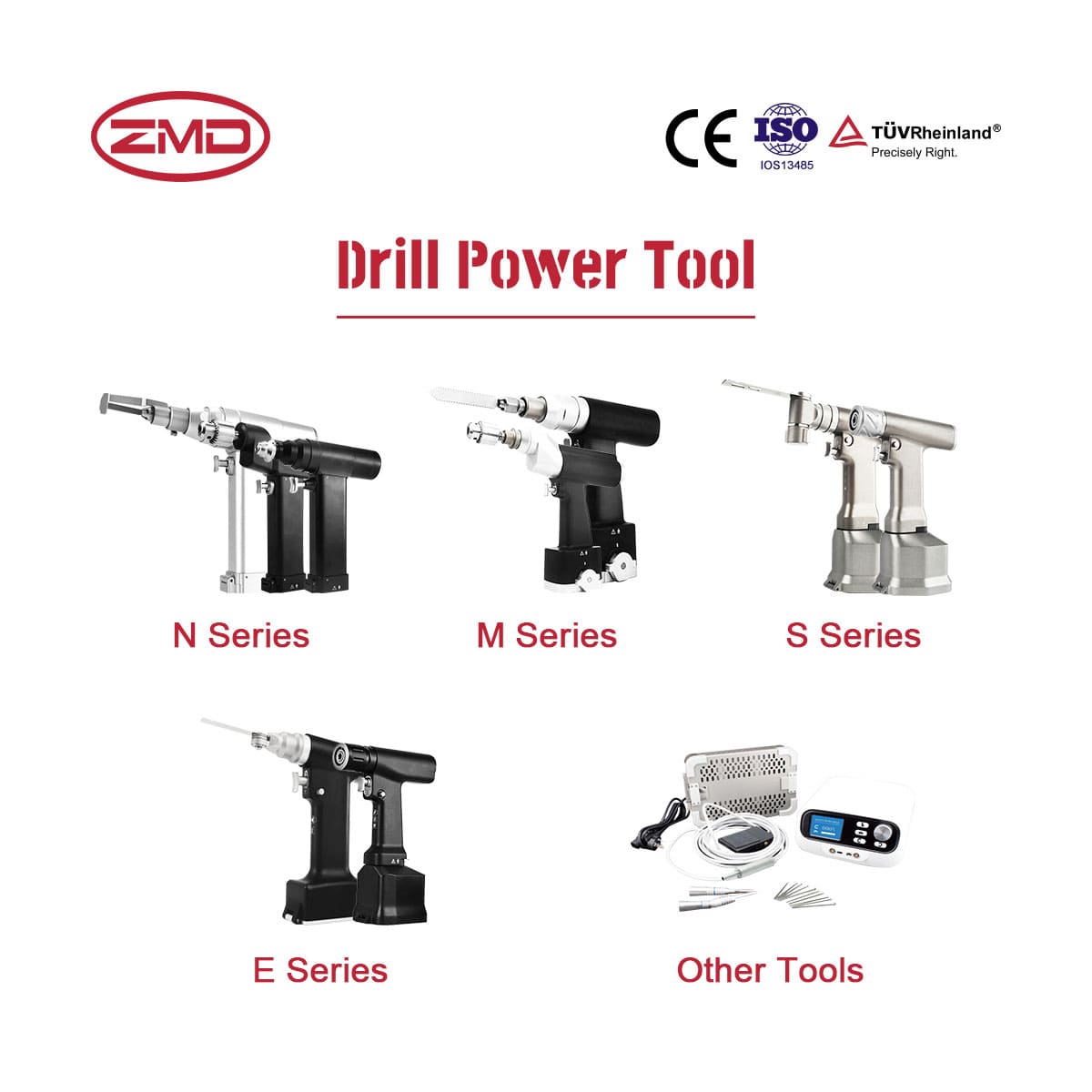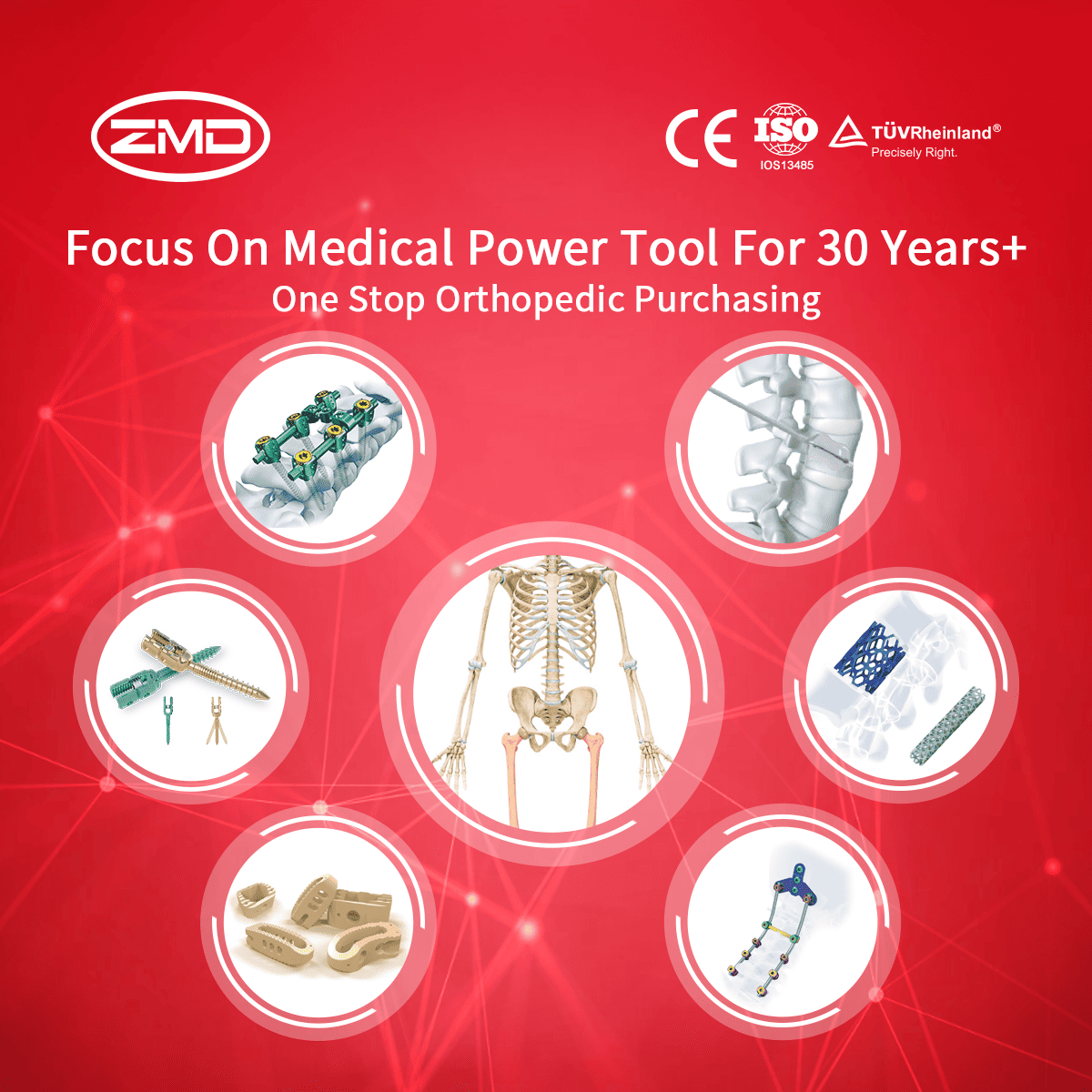Multifunctional Drill Saw System
ZMD
Orthopedic Products
Haven't been able to locate the product you're searching for yet?
If you're interested in more orthopaedic implant products, feel free to get in touch with our ZMD consultants.
What are Multifunctional Drill Saw System?
In the medical field, precision can mean the difference between a successful procedure and a compromised outcome. Medical electric tools are engineered with meticulous attention to detail to achieve this precision. For example, in ophthalmic surgeries like cataract removal or corneal transplants, electric microsurgical tools allow surgeons to operate on the minuscule structures of the eye with astonishing accuracy. The cutting and manipulation of the delicate corneal tissue or the precise insertion of an artificial lens during cataract surgery demand a level of precision that traditional tools could not always provide. With medical electric tools, surgeons can control the movements down to the finest increments, ensuring that each action is executed exactly where and how it should be, safeguarding the patient’s vision and overall eye health

- Multifunctional Medical Drill Saw System:This versatile marvel seamlessly integrates the functionalities of a medical drill and a medical saw, empowering surgeons to perform precise bone drilling, execute intricate cuts through soft tissues, and delicately manipulate medical implants.
- Medical Electric Drill:For tasks that demand the finesse of a medical electric drill, these diminutive powerhouses are your ideal companions. Whether you’re drilling delicate holes for implant placement or accessing confined spaces within the body, medical electric drills deliver unparalleled precision and control.
- Medical Electric Saw:When operating in areas that require the finesse of a medical electric saw, these precision tools are your allies. Whether you’re slicing through delicate nerves, intricate blood vessels, or fine tissue membranes, medical electric saws deliver unparalleled precision and control, minimizing trauma to surrounding structures.
- Medical Electric Cannulated Drill:Stepping into the realm of minimally invasive surgical marvels, medical electric cannulated drills are specifically designed for neuro-, orthopedic-, and spinal surgery. Their hollow shafts enable the passage of wires, cables, or other instruments, facilitating delicate maneuvers with minimal disruption to surrounding tissues.

When Are Multifunctional Drill Saw System Needed?
In the intricate realm of medicine, where precision, control, and minimal disruption are paramount, medical electric tools emerge as indispensable instruments. These marvels of engineering are meticulously designed to navigate the delicate landscapes of the human body, empowering medical professionals to perform minimally invasive surgery with unparalleled accuracy and finesse. Whether you’re a seasoned surgeon, an aspiring medical student, or simply fascinated by the wonders of modern medicine, medical electric tools offer a glimpse into the future of healthcare.
Multifunctional Medical Drill Saw System
- Bone Drilling Precision: In orthopedic surgeries such as joint replacements or fracture fixations, precise bone drilling is of utmost importance. The drill function of this system allows surgeons to create holes in bones with exacting accuracy. For example, in a hip replacement surgery, when inserting the femoral stem of the prosthesis, the drill can be adjusted to the appropriate speed and torque based on the specific characteristics of the patient’s bone. This ensures that the holes drilled in the femur are of the correct diameter and depth, providing a stable foundation for the implant. The seamless integration of the drill within the system means that surgeons can quickly switch between drilling and other necessary functions during the procedure, saving valuable time.
- Soft Tissue Cutting Expertise: When it comes to soft tissues, the saw function of the system proves its worth. In surgeries involving complex soft tissue reconstructions, like those following severe trauma or tumor resections, surgeons need to make precise cuts through muscles, tendons, and fascia. The medical saw within this system can execute these intricate cuts with remarkable finesse. For instance, in a reconstructive procedure for a soft tissue defect in the limb, the saw can delicately slice through the tissues to create flaps that can be repositioned or grafted. This minimizes damage to the blood supply and nerve innervation within the soft tissues, promoting better healing and functional recovery for the patient.
- Implant Manipulation Advantage: The ability to delicately manipulate medical implants is yet another significant benefit of this system. In spinal surgeries where rods and screws are used to correct deformities or stabilize the spine, the drill saw system enables surgeons to make any necessary adjustments to the bone surfaces and precisely position the implants. They can use the drill to create anchor points and then utilize the saw to fine-tune the bone preparation if required. This ensures that the implants integrate optimally with the bone and soft tissues, maximizing the success of the surgical intervention and reducing the risk of implant loosening or migration over time.
Medical Electric Drill
- Implant Placement Precision: In dental implantology, for example, these drills are indispensable. When placing dental implants in the jawbone, the drill must create holes with a high level of precision. The small size and adjustable power settings of medical electric drills allow dentists to drill holes that are precisely sized and positioned according to the specific requirements of each patient’s oral anatomy. This precision is vital for ensuring proper osseointegration, which is the process by which the implant fuses with the bone, enabling long-term stability and functionality of the dental prosthesis.
- Accessing Confined Spaces: In minimally invasive surgeries within the body, accessing and working in tight spaces can be a challenging task. Medical electric drills are designed to overcome such challenges. For instance, in arthroscopic knee surgery, if there is a need to drill a small hole for inserting a fixation device to repair a torn ligament, the drill can be maneuvered through the small incisions and within the joint space with great dexterity. Its ability to deliver controlled and precise drilling in such confined areas helps to minimize damage to the surrounding cartilage and other joint tissues, facilitating a smoother recovery for the patient.
Medical Electric Saw
- Nerve and Vessel Surgery: In neurosurgery, when operating around the brain or spinal cord, the utmost care must be taken to avoid damaging the intricate nerve structures. For example, in a procedure to remove a spinal tumor that is close to the spinal cord and nerve roots, the medical electric saw can be used to carefully cut through the bone and any overlying soft tissues. The saw’s design allows for a controlled cutting motion, minimizing the risk of accidental injury to the nerves. Similarly, in vascular surgeries where blood vessels need to be accessed or repaired, the saw can delicately cut through the surrounding tissues to expose the vessels while ensuring their integrity is maintained. This precise cutting is crucial for preventing bleeding and maintaining proper blood flow in the body.
- Tissue Dissection: In plastic and reconstructive surgeries, achieving precise tissue dissection is key to obtaining good aesthetic and functional outcomes. When performing a facelift or a rhinoplasty, for example, the medical electric saw can be used to make fine incisions and cuts through the skin, subcutaneous tissues, and cartilage. This enables surgeons to reshape the facial structures precisely as desired, while reducing the risk of excessive bleeding, bruising, and damage to the underlying tissues that could lead to poor healing or an unnatural appearance.
Medical Electric Cannulated Drill
- Minimal Tissue Disruption: In spinal fusion surgeries, the hollow shaft of the cannulated drill is a critical feature. Surgeons can insert a guidewire through the shaft first and then use the drill to create a hole along the path of the guidewire in the vertebrae. This technique allows for precise placement of screws for spinal fixation while minimizing disruption to the surrounding muscles, ligaments, and nerve tissues. The ability to pass other instruments through the hollow shaft also simplifies the surgical process and reduces the need for additional incisions or manipulations that could cause trauma to the patient’s body.
- Complex Surgical Maneuvers: In orthopedic trauma surgeries, especially those involving fractures in areas with limited access, like the femoral neck or the spine, the cannulated drill enables surgeons to perform complex maneuvers. For example, in a minimally invasive fixation of a femoral neck fracture, the drill can be used to create a tunnel through which fixation pins or screws can be inserted precisely. This approach reduces the need for large open incisions, decreases blood loss, and promotes faster recovery by minimizing damage to the soft tissues around the fracture site. In neurosurgery, when dealing with deep-seated brain lesions or when performing procedures on the spinal cord, the cannulated drill facilitates the insertion of catheters or electrodes through its hollow shaft, allowing for more targeted and less invasive interventions while safeguarding the delicate neural tissues.
Blog
International Women’s Day: Salute to the “She – Power” at ZMD
International Women’s Day: Salute to the “She – Power” at ZMD Amid the trends of “Intelligent Medical Devices” and “Minimally Invasive Medical Technologies”, ZMD thrives
Discover Innovation with Sunan Medical at AAOS
Discover Innovation with Sunan Medical at AAOS The American Academy of Orthopaedic Surgeons (AAOS) Annual Meeting is the premier event for orthopedic professionals worldwide, offering
Visit Us at Expomed Eurasia 2025: Discover Sunan Medical’s Innovations
Visit Us at Expomed Eurasia 2025: Discover Sunan Medical’s Innovations The 32nd Expomed Eurasia, taking place from April 24-26, 2025, at the Tüyap Exhibition and

